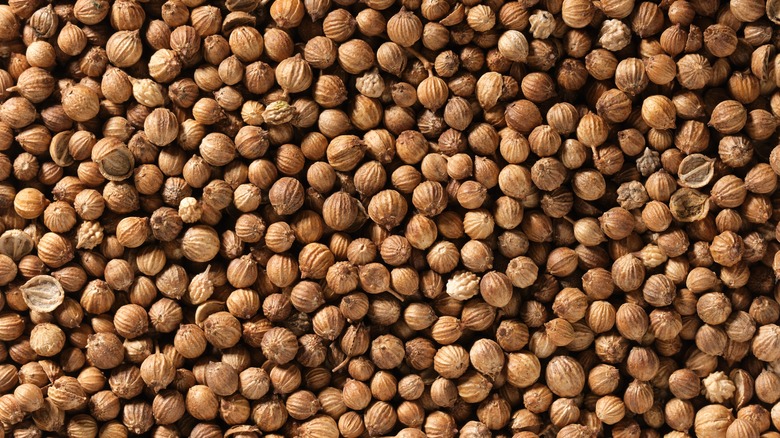If you’ve ever sniffed from a jar of garam masala or eaten a friend’s homemade pickles, you’ve likely come in contact with coriander. You may not recognize it right off the bat — the earthy seasoning is less assertive than most others found in a spice drawer, but there’s no question it adds a certain something to a dish. Just as a juicy secret delivered with a whisper tends to be more precious than blurted-out gossip, coriander is the subtle spice you didn’t know your dishes were missing. Here now, a deeper dive.
Coriander’s flavor profile

First, let’s address the question you’re feeling too shy to ask but also really want to know the answer to: Isn’t coriander the same thing as cilantro? I think I heard that on the Food Network like 10 years ago. The answer is, well, yes and no. Technically, cilantro is the Spanish word for “coriander leaves,” and both come from the same plant, yet the two are not interchangeable. Coriander leaf, or cilantro, is that divisive herb some people liken to soap. Coriander seeds are the plant’s dried fruit, which can be used whole or ground.
Unlike bold cilantro, coriander’s mellow flavor profile is slightly citrusy with notes of sweetness. Dry-toasting coriander in a pan allows the spice to take on a more robust floral aroma as the oils release from the seeds.
Whole vs. ground coriander seed

Although the difference in flavor between ground and whole coriander is nuanced, the powder works best for incorporating flavor seamlessly into doughs and batters, while the texture of whole or gently cracked seeds complements meat rubs or condiments like gremolata or chutney.
Another tick in the pro column for coriander seeds is their ability to maintain potency over time. Stored properly in airtight jars in a cool, dry part of the kitchen, coriander seeds will stay fresh for almost a year. Ground coriander’s flavor will diminish after a few months, so it’s best purchased in smaller quantities. Better yet, save money by grinding coriander seeds yourself. No spice grinder? A small food processor will do the trick.
What can I use coriander seed for?

Coriander’s subtle sweet-and-sour flavor profile lends itself to both sweet and savory dishes. Like a backup singer rounding out the center-stage diva’s vocals, coriander should be used along with other spices to create more intricate seasoning blends.
A common ingredient in African spice blends, like Ethiopian berbere and Egyptian dukkah, coriander is also typically found in Southeast Asian, Spanish, and Central and South American seasonings. However, coriander’s pleasant yet subtle flavor can enhance sweet and savory dishes of any origin, from yeasted doughs and cookies to sauerkraut and racks of lamb.
Coriander can also cure a quick craving for a crunchy snack: Spill coriander seeds into a heavy-bottomed skillet and toast over medium heat until fragrant. Toss the seeds with olive oil and sea salt, maybe a little garlic powder, and dig in.
Coriander substitutions

Halil ibrahim mescioglu/Shutterstock
Coriander’s distinct flavor profile makes it difficult to substitute. While nothing will quite capture the striking essence of coriander, a combination of fennel seeds and anisey crushed caraway, paired with a bit of cumin, can fill the void in a pinch.







